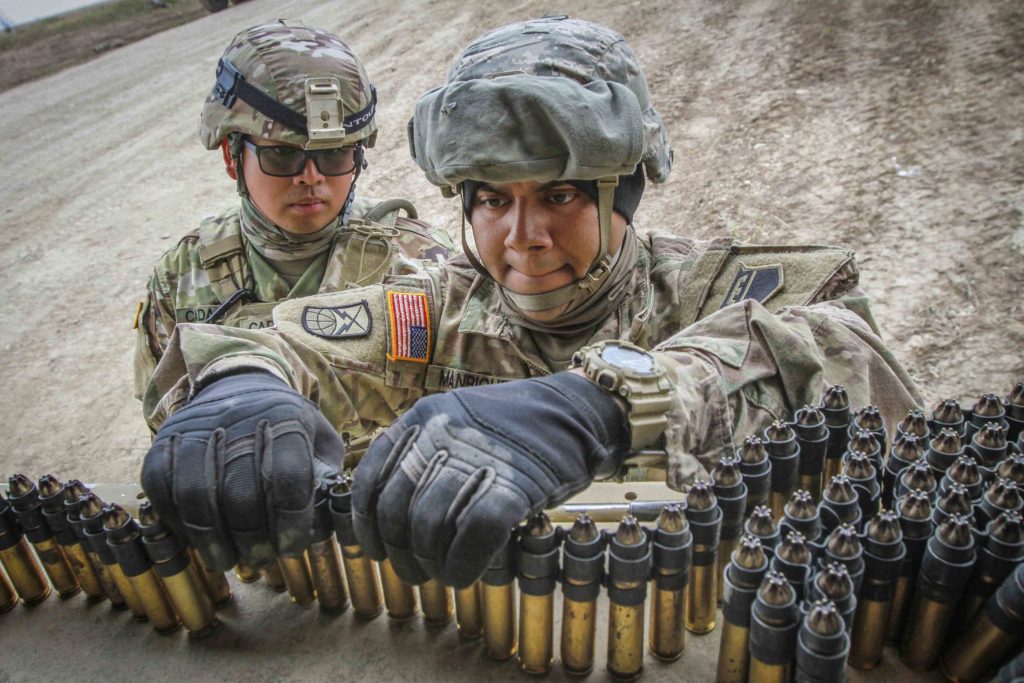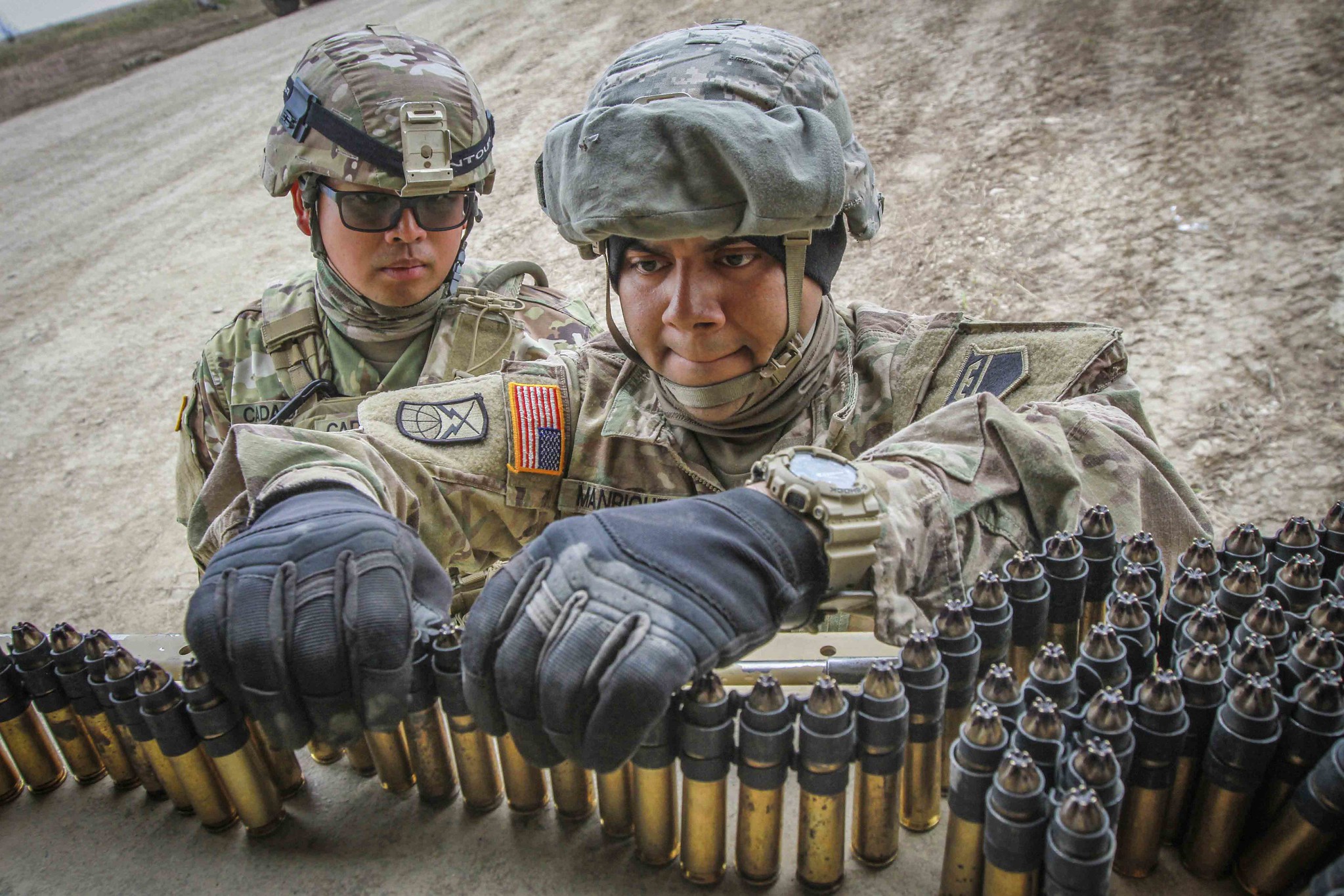

Topic Objective
Develop an advanced digital detector panel for performing high-energy neutron radiography imaging with high spatial resolution, high sensitivity, high signal to noise ratio (SNR), high conversion efficiency and long lifetime of use in order to accurately detect defects in ammunition and armaments.
Description
The U.S. Army has a need for a state-of-the-art (SOTA) digital detector panel for performing high-energy neutron radiography (NR) with energy levels up to 6-8 megaelectronvolt (MeV) average neutron energy. Such a commercial detector panel does not currently exist. Over the past decade much time and effort has been invested in an electronically produced source of high-energy neutrons for performing NR to great success. It is currently available at a commercial facility. This SOTA source requires an equally SOTA detector in order to achieve optimal results. Neutron Radiography is now performed by using a detector which is optimized for X-radiography that is then modified via the addition of a conventional conversion screen, allowing for sufficient NR to be performed. Neutron radiography is so important because whereas X-radiography highlights possible defects in the high-density components of a munition, neutron radiography highlights defects in the lower density regions, even when these lower density regions are obscured by high density steel components. Thus, energetic fill and voids, gaskets, O-rings and any low-density components will show up better using NR than using traditional X-radiography. This NR technique will serve as an important complement to the current traditional X-radiography and will allow for more thorough inspections of ammunition and armaments. Requirements for the detector panel include an overall size, weight and power draw that is compatible with the current industry standard for an 11”x 17” usable imaging area silicon-based digital detector panel and connection to a standard computer for download of images. Long lifetime use equates to at least one (1) year of half-time (20 hours beam-on time per 40 hour work week) operation without degradation. Specific requirements for high spatial resolution, high sensitivity, high signal to noise ratio (SNR), and high conversion efficiency will be determined during Phase I.
Phase I
Phase I will consist of a modeling and feasibility study that will result in laboratory bench top prototype conversion screens being manufactured and then demonstrating their performance requirements in a laboratory setting. This may require the contractor to have access to a silicon-based digital detector panel, which must be arranged by the contractor. It may also require access to a high-energy neutron source, which the government can facilitate. The contractor is responsible for providing the prototype detector to the neutron source facility and providing any personnel support required. The contractor can assume the facility is Picatinny Arsenal, NJ. The main focus of the testing will be to demonstrate and quantify spatial resolution, sensitivity, SNR and efficiency. The Phase I Option will finalize the requirements specification to guide development in Phase II.
Phase II
Phase II will further mature the technology to ascertain and weigh any compromises on the requirements so the end result is the best possible detector panel. There will be a final demonstration with a high-energy neutron source at Picatinny Arsenal, NJ followed by delivery of this final optimized detector panel and conversion screen combination to the US Army at Picatinny Arsenal.
Phase III
Phase III will see the incorporation of said detector panel into all US Army NR systems in both laboratory and load plant applications.
Submission Information
Full proposal packages must be submitted through the DSIP Portal.

References:
Topic Objective
Develop an advanced digital detector panel for performing high-energy neutron radiography imaging with high spatial resolution, high sensitivity, high signal to noise ratio (SNR), high conversion efficiency and long lifetime of use in order to accurately detect defects in ammunition and armaments.
Description
The U.S. Army has a need for a state-of-the-art (SOTA) digital detector panel for performing high-energy neutron radiography (NR) with energy levels up to 6-8 megaelectronvolt (MeV) average neutron energy. Such a commercial detector panel does not currently exist. Over the past decade much time and effort has been invested in an electronically produced source of high-energy neutrons for performing NR to great success. It is currently available at a commercial facility. This SOTA source requires an equally SOTA detector in order to achieve optimal results. Neutron Radiography is now performed by using a detector which is optimized for X-radiography that is then modified via the addition of a conventional conversion screen, allowing for sufficient NR to be performed. Neutron radiography is so important because whereas X-radiography highlights possible defects in the high-density components of a munition, neutron radiography highlights defects in the lower density regions, even when these lower density regions are obscured by high density steel components. Thus, energetic fill and voids, gaskets, O-rings and any low-density components will show up better using NR than using traditional X-radiography. This NR technique will serve as an important complement to the current traditional X-radiography and will allow for more thorough inspections of ammunition and armaments. Requirements for the detector panel include an overall size, weight and power draw that is compatible with the current industry standard for an 11”x 17” usable imaging area silicon-based digital detector panel and connection to a standard computer for download of images. Long lifetime use equates to at least one (1) year of half-time (20 hours beam-on time per 40 hour work week) operation without degradation. Specific requirements for high spatial resolution, high sensitivity, high signal to noise ratio (SNR), and high conversion efficiency will be determined during Phase I.
Phase I
Phase I will consist of a modeling and feasibility study that will result in laboratory bench top prototype conversion screens being manufactured and then demonstrating their performance requirements in a laboratory setting. This may require the contractor to have access to a silicon-based digital detector panel, which must be arranged by the contractor. It may also require access to a high-energy neutron source, which the government can facilitate. The contractor is responsible for providing the prototype detector to the neutron source facility and providing any personnel support required. The contractor can assume the facility is Picatinny Arsenal, NJ. The main focus of the testing will be to demonstrate and quantify spatial resolution, sensitivity, SNR and efficiency. The Phase I Option will finalize the requirements specification to guide development in Phase II.
Phase II
Phase II will further mature the technology to ascertain and weigh any compromises on the requirements so the end result is the best possible detector panel. There will be a final demonstration with a high-energy neutron source at Picatinny Arsenal, NJ followed by delivery of this final optimized detector panel and conversion screen combination to the US Army at Picatinny Arsenal.
Phase III
Phase III will see the incorporation of said detector panel into all US Army NR systems in both laboratory and load plant applications.
Submission Information
Full proposal packages must be submitted through the DSIP Portal.
References:
